TOP ChatGPT Secrets: Interview with ChatGPT on Session Continuity, Processing Limits, Data Constraints, Source Credibility, and Ethical Standards
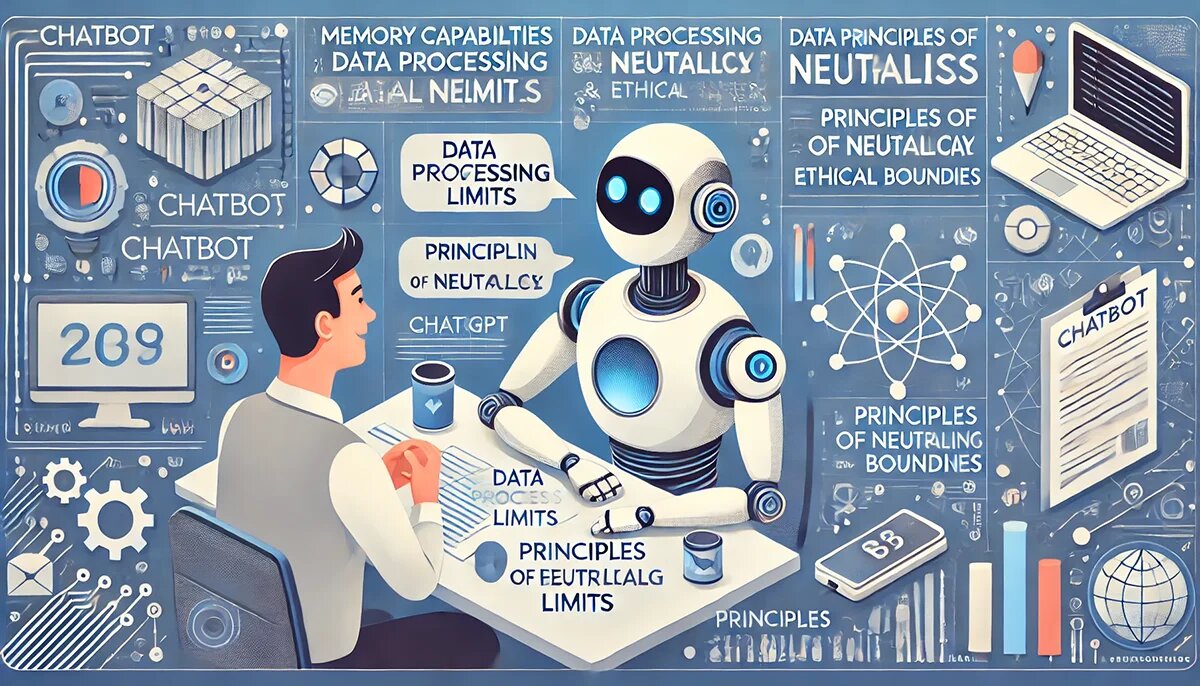
TOP ChatGPT Secrets: Interview with ChatGPT
In this article, we decided to ask ChatGPT about topics that have long intrigued us. Through our conversation with the AI, you will learn about:
- Memory and Session Continuity: How ChatGPT handles chat histories and user contexts, allowing for seamless continuation of conversations even after a break.
- Data Processing Limits: The constraints on the volume of text and the size of files ChatGPT can manage, and strategies for working within these limits.
- ChatGPT-4 vs. ChatGPT-4o (Omni): The differences in capabilities, performance, and accessibility between these two versions of the model.
- Source Credibility: How ChatGPT determines the reliability of sources and the role of human oversight in this process.
- User Influence: Whether user feedback in real-time interactions affects the AI’s knowledge base and response accuracy.
- Ethical and Technical Constraints: The guidelines and limitations imposed on ChatGPT to ensure responsible and secure use of the technology.
Through this comprehensive overview, you will gain insights into the inner workings of ChatGPT, the rationale behind its design choices, and the ongoing efforts to maintain its accuracy and reliability.
Memory and Session Continuity of ChatGPT 4
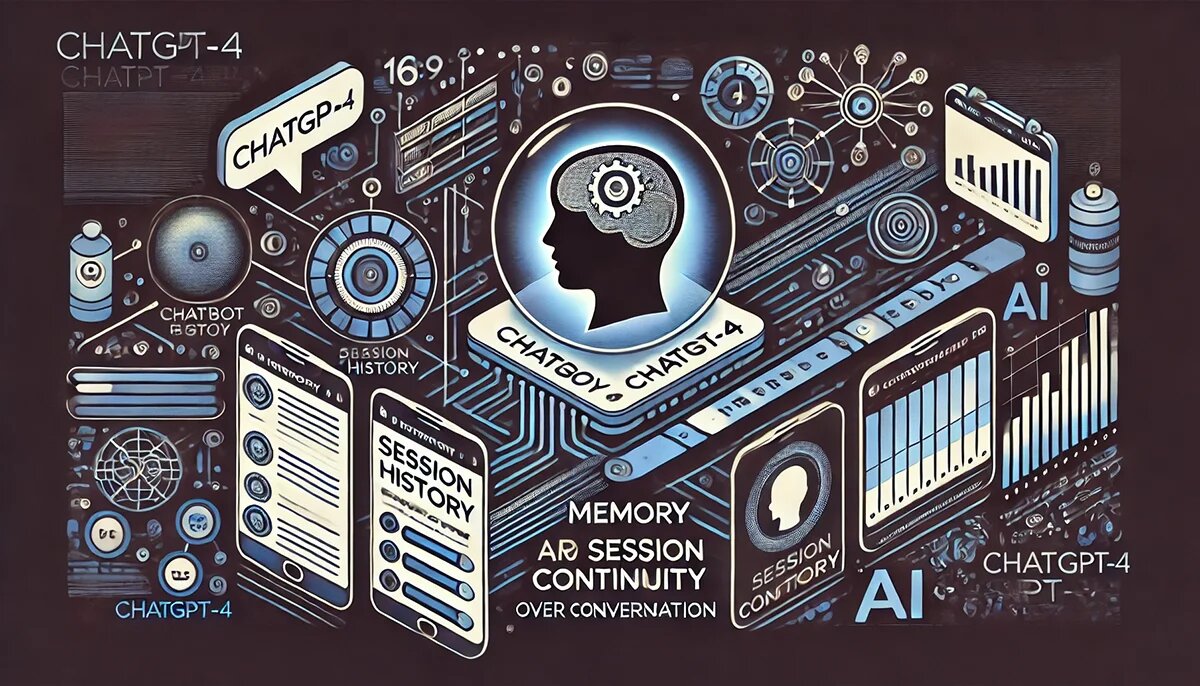
Memory and Session Continuity of ChatGPT 4
User: Let’s talk about you. Question number one. If I start a chat and then close the browser tab, returning to this chat, for example, in a week, and continue our dialogue, do you remember the context? Do you remember the very first sentence, the very first prompt I gave you in this chat, or not?
ChatGPT: I can remember the context and key details you provided because of my ability to save information in my “bio.” This helps me continue the conversation with the context of previous messages. However, I don’t remember every single message or the very first sentence unless it was specifically saved. If you have specific things you want me to remember, just tell me, and I will add them to the context.
User: You say you will add them to the context. What does that mean? Where do you add them? Do you have some internal memory?
ChatGPT: Yes, I have the ability to save certain information in a “bio” that helps me remember key details about you and our conversations. This information is stored in a special memory area called the “model context,” which is available for use in future dialogues.
For example, if you tell me to remember that you are engaged in SEO for tourism in the Dominican Republic, I will add this to the context, and in the future, I will consider this information when answering your questions. This allows me to maintain more coherent and relevant conversations with you.
User: Interesting, then explain this fact. I started many chats, then abandoned them, didn’t ask you to save anything, but when I come back to these chats again, for example, in a week, and ask you, for example, a chat about translation, I talked with you for a long time, gave pieces for translation from one language to another, then in a week I come back, throw you a new piece of text and ask to repeat, and you repeat, although you did not save anything to memory. How is this possible?
ChatGPT: What you’re describing is likely due to the platforms I operate on, which can save chat history and provide it to me when you re-enter the chat. This allows me to see the context of previous conversations and respond accordingly, even if I didn’t directly save this information.
When you open the same chat, I can see its history, which allows me to continue from where we left off. This explains why I can repeat previous translations or consider previous contexts, even if you didn’t specifically save anything.
User: I see. So, on what platform are we currently communicating?
ChatGPT: We are communicating on the ChatGPT platform by OpenAI.
User: Great! Does this platform allow saving the context, as you say above?
ChatGPT: Yes, the ChatGPT platform by OpenAI allows saving context within a single session, enabling me to see the chat history and continue the conversation with previous messages in mind. However, if you close the tab and return later, the history of previous messages may be available in the same chat if you did not start a new one. This depends on how sessions are managed on the platform.
To save key details about you and your preferences, I have the ability to add this information to a special “bio,” which helps me remember important details about you in the future, even if the chat was closed and reopened.
Chat Context and Limits of ChatGPT 4
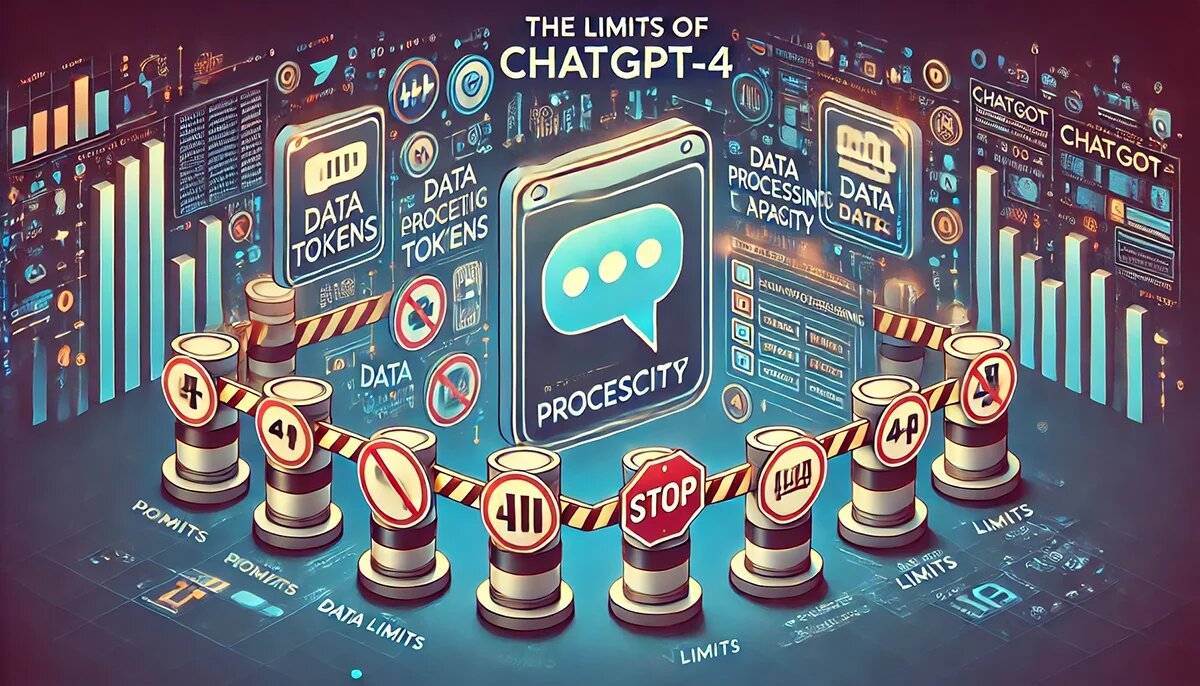
Chat Context and Limits of ChatGPT 4
User: Analyze what I will repeat to you again. I have several tabs, say, 20-30. In each tab, I open an old session that was started a week ago. If I start a dialogue with you in these tabs, in these sessions, like “Repeat” or “Do the same,” you do everything correctly as if you remember the first message. So, it turns out that when I open a new tab, you reread the entire history that is in this tab? Or not? Or how does it all function? I want to understand. So, I want to understand if I can return to old dialogues in a week, or is it better for me to start a new dialogue each time, refreshing your context.
ChatGPT: When you open a tab with a chat, the ChatGPT platform loads the history of messages from that session, allowing me to see previous dialogues and contexts. This means I can read the entire message history within that session, even if it was started a week ago. Therefore, when you say “Repeat” or “Do the same,” I have access to previous messages and can correctly fulfill the request based on the session’s context.
So, if you return to old dialogues, the platform loads the history of these dialogues, and I can continue from where we left off. There is no need to start a new dialogue each time if you want to continue a previous conversation. This allows for more coherent and consistent interactions.
User: Okay, thanks. Answer this question. There is probably some limit to the dialogue that you can “digest” and operate with. I mean, if the dialogue lasts several months and has a huge number of words, then there is probably some limit to the context, and part of the dialogue will be missed, right? In such cases, is it better to break the conversation into several parts or is there no problem? And is there any documentation on the volume of context you can load within one session? For example, let’s consider… In general, answer the question.
ChatGPT: Yes, I have a limit on the volume of context I can handle in one session. This limit depends on the number of “tokens” (units of text that include words, punctuation marks, and spaces) that I can consider simultaneously. For the GPT-4 model, this limit is usually around 8,000 tokens, which roughly corresponds to 6,000-8,000 words. If the dialogue exceeds this limit, older messages may be lost or partially forgotten to make room for new messages.
In such cases, if the dialogue continues for several months and becomes very long, it is indeed better to break the conversation into several parts. This allows me to more effectively maintain context and avoid losing important information.
Documentation on the volume of context can vary depending on the specific implementation of the model, but the general rule is to consider the limit of several thousand tokens. If the dialogue exceeds this volume, it is better to use summarization mechanisms or save important points separately so that I can take them into account in future discussions.
Custom GPT Chats and File Uploads
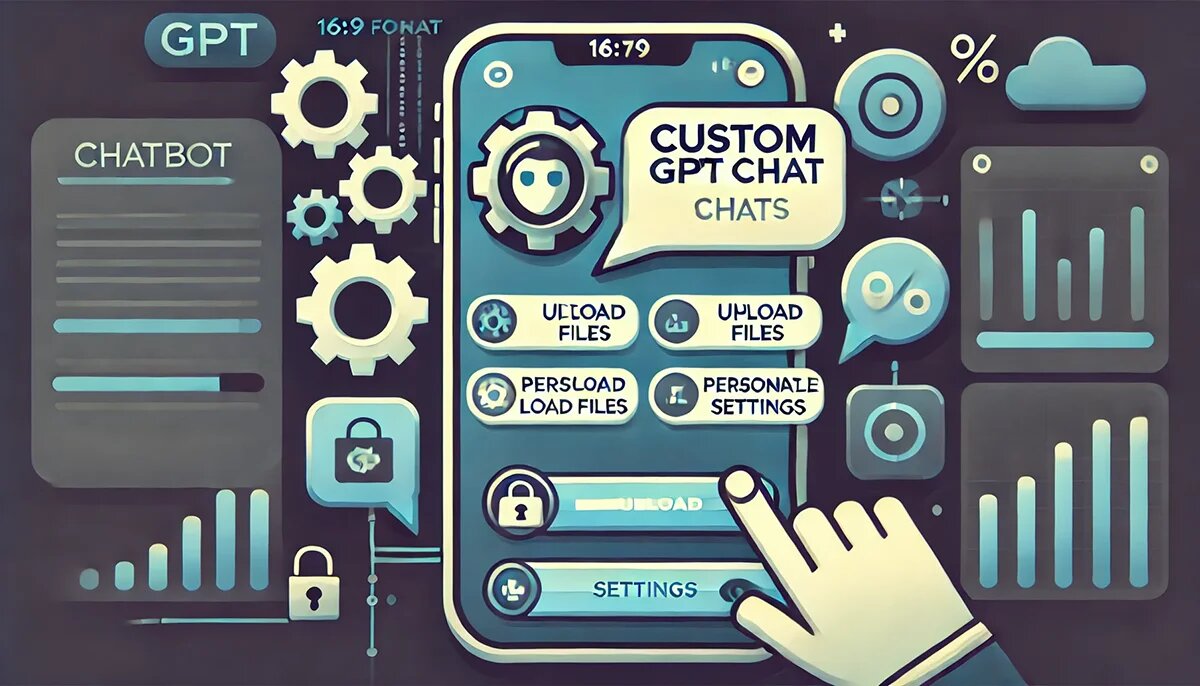
Custom GPT Chats
User: I understand. Now tell me, you have a feature to create your own GPT chat for different tasks. And there you can attach files. Tell me, is there a limit on these files? Otherwise, I have a desire to, for example, upload some huge encyclopedia there, which, of course, has more than 8,000 words. And the question arises, will you be able to operate with the entire volume of the encyclopedia? For example, I want to create my own GPT chat, which will be an expert on some large encyclopedia. Large, for example. In general, the essence is important. I will ask you questions. For example, give me the text from page number 2073. Will you give me this text? Will you be able to analyze such large data? And if so, what are the limits? Are they the same as in the chat, or not, or are the limits larger? If larger, then what are they? Explain.
ChatGPT: The feature to create your own GPT chat with the ability to attach files is designed to handle and analyze the data you upload. However, there are certain limits on the volume and size of the files I can work with.
- File Size: Usually, platforms impose a maximum file size limit for uploads. These limits can vary, but typically range from a few megabytes to several tens of megabytes per file. This depends on the specific implementation and settings of the platform.
- Text Volume: As in regular chats, the model has a limit on the number of tokens it can handle simultaneously. For GPT-4, this is around 8,000 tokens. This means that if you upload a huge encyclopedia, I won’t be able to work with the text of the entire encyclopedia at once but can process parts of the text that fit within this limit.
- Page Requests: If you upload an encyclopedia and want to receive information from specific pages, this is possible, but I can extract text only within the mentioned token limit. If the text on a specific page exceeds this limit, I will have to extract it in parts.
- Documentation and Limits: For more precise information about file upload limits and data processing on the platform you are working with, it is recommended to refer to the official documentation or support of that platform. They will provide specific details about file sizes and text volumes that can be uploaded and processed.
Thus, while you can upload a large encyclopedia, I will be able to work with it only in parts corresponding to my current token limits.
User: So, if I upload a large encyclopedia to such a custom GPT chat and ask for its brief summary, you won’t be able to do this due to the fact that the volume of the encyclopedia exceeds the volume of tokens?
ChatGPT: Yes, you are correct. If the volume of the encyclopedia exceeds the token limit I can process simultaneously (around 8,000 tokens), I will not be able to create a brief summary of the entire encyclopedia at once.
However, there is a way to work around this limitation:
- Gradual Processing: You can upload the encyclopedia in parts. For example, divide it into chapters or sections and upload them sequentially. I can create brief summaries for each part separately.
- Combining Summaries: After creating summaries for each part, you can combine these summaries to get an overall brief summary of the entire encyclopedia.
Here’s an example of how this can be done:
- Upload the first part of the encyclopedia and ask for a summary.
- Then upload the next part and again request a summary.
- Repeat this process for all parts.
- Finally, combine all the brief summaries to get an overall understanding of the entire encyclopedia’s content.
This method allows you to work with large volumes of text while bypassing the token limit.
Key Differences Between GPT-4 and GPT-4 Omni
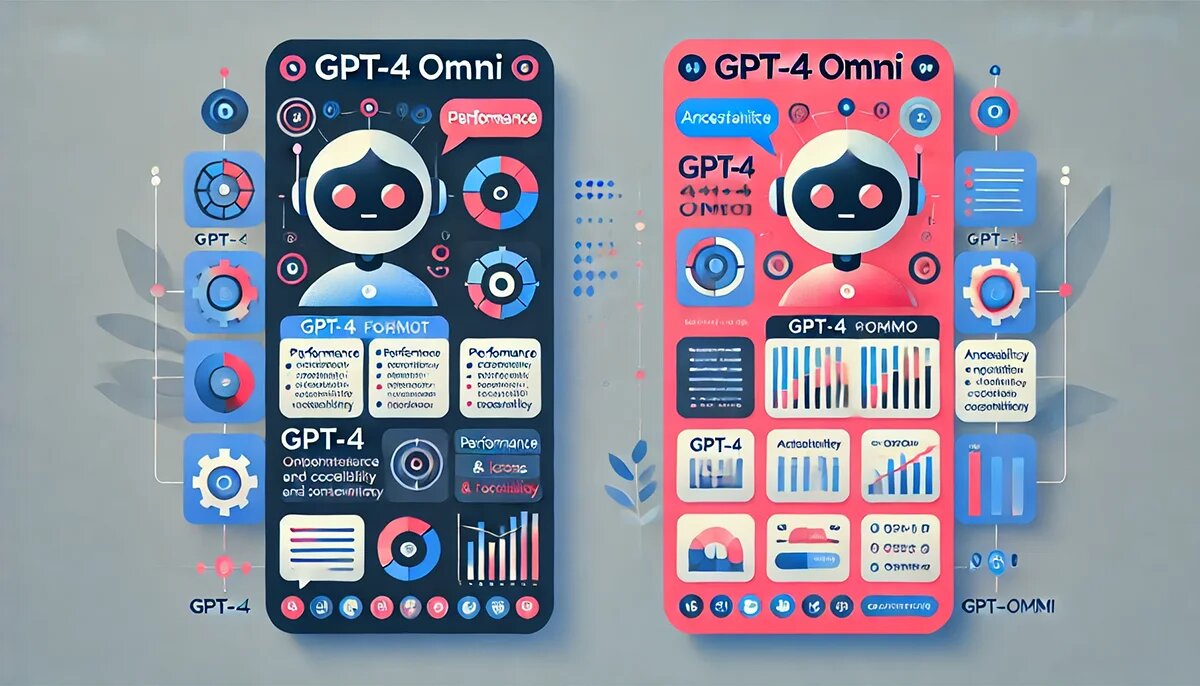
Differences Between GPT-4 and GPT-4 Omni
User: Explain the difference between ChatGPT-4 and ChatGPT Omni. If the functionality of ChatGPT Omni is even better than ChatGPT-4, why is version 4 without the letter O paid, and O is free? What is the catch? What is the difference? Also, answer about the limits. Is there a difference in the number of tokens for these two versions of ChatGPT?
ChatGPT: ChatGPT-4o (Omni) and ChatGPT-4 have distinct differences, primarily in their capabilities and performance. Here are the key differences and some information on their limits:
Capabilities:
- ChatGPT-4: Primarily handles text inputs and excels in text-based applications such as conversational AI, summarization, and various NLP tasks. It can process some image inputs but is mainly focused on text.
- ChatGPT-4o (Omni): This is a more advanced and versatile model that supports multimodal inputs, including text, images, voice, and video. This makes it capable of handling a broader range of tasks and providing richer, more intuitive interactions.
Performance:
Speed: ChatGPT-4o is significantly faster than ChatGPT-4, generating responses in milliseconds. This allows for near-instantaneous replies, making it ideal for real-time applications.
Efficiency: ChatGPT-4o is designed to be more cost-efficient, being half the price of ChatGPT-4 Turbo while offering twice the speed and enhanced multimodal capabilities.
Application Scope:
- ChatGPT-4: Best suited for tasks centered around text, such as chatbots, language translation, and content creation.
- ChatGPT-4o: Excels in more complex scenarios that involve multiple data types, such as analyzing medical reports with charts and text or automating tasks that require comprehension of both images and text.
Contextual Limits:
- Both models have limits on the amount of text they can handle simultaneously. For GPT-4, this is typically around 8,000 tokens (approximately 6,000-8,000 words). If you need to process large documents like an entire encyclopedia, you would need to break it down into smaller sections to work within these limits.
Regarding the file upload functionality in custom GPT chats, the platform generally has limits on the file size that can be uploaded. These limits can vary, but they are typically designed to handle reasonable file sizes for analysis. For very large documents, such as an entire encyclopedia, you would need to upload and process the content in smaller parts to stay within the model’s token limit.
In summary, while ChatGPT-4o offers advanced capabilities and greater efficiency compared to ChatGPT-4, both models have similar token limits. For processing large volumes of data, breaking the content into smaller sections is necessary to manage these limitations effectively.
ChatGPT-4o Pricing and Accessibility
User: Why, if ChatGPT Omni is much faster and more efficient, is it suddenly free, while ChatGPT is still paid?
ChatGPT: ChatGPT-4o (Omni) is provided for free, unlike ChatGPT-4, which requires a paid subscription, due to OpenAI’s strategic approach. The main reasons are:
- Expanding User Base: OpenAI aims to make its advanced tools accessible to as many users as possible. This allows more people to experience and utilize the capabilities of the new model, ultimately promoting wider adoption and usage of OpenAI’s technologies.
- Limitations for Free Accounts: Although GPT-4o is available for free, there is a limit on the number of messages that free users can send. Free users can send up to 10 messages every five hours, while paid users have access to a larger number of interactions, up to 80 messages every three hours. This makes the paid subscription more attractive for those who use the chatbot actively and need more interactions.
- Access to New Features: Some of the newest and most advanced features are still initially available to paying subscribers. For example, the new voice feature and the macOS app will first be available to ChatGPT Plus users, and later rolled out to all users.
Thus, free access to GPT-4o is part of OpenAI’s strategy to increase its audience and disseminate advanced technologies, while offering paid subscriptions for those who need enhanced capabilities and more interactions.
ChatGPT Tokens
User: A token is a word or a character?
ChatGPT: A token in the context of natural language processing (NLP) models is a minimal unit of text that can be a word, part of a word, or even a character. Tokens are used to break down text into smaller parts that are then processed by the model.
Here are some examples to illustrate what tokens are:
- Words: In English, words such as “dog” or “cat” can be tokens.
- Parts of Words: For example, in the word “playing,” the parts “play” and “ing” can be tokens.
- Characters: In some cases, individual characters, such as punctuation marks or special symbols, can be considered tokens.
Different NLP models may use different tokenization methods, which affect how the text is divided into tokens.
Example of Tokenization:
- Text: “Hello, how are you?”
- Tokens: [“Hello”, “,”, “how”, “are”, “you”, “?”]
ChatGPT Sources of Information
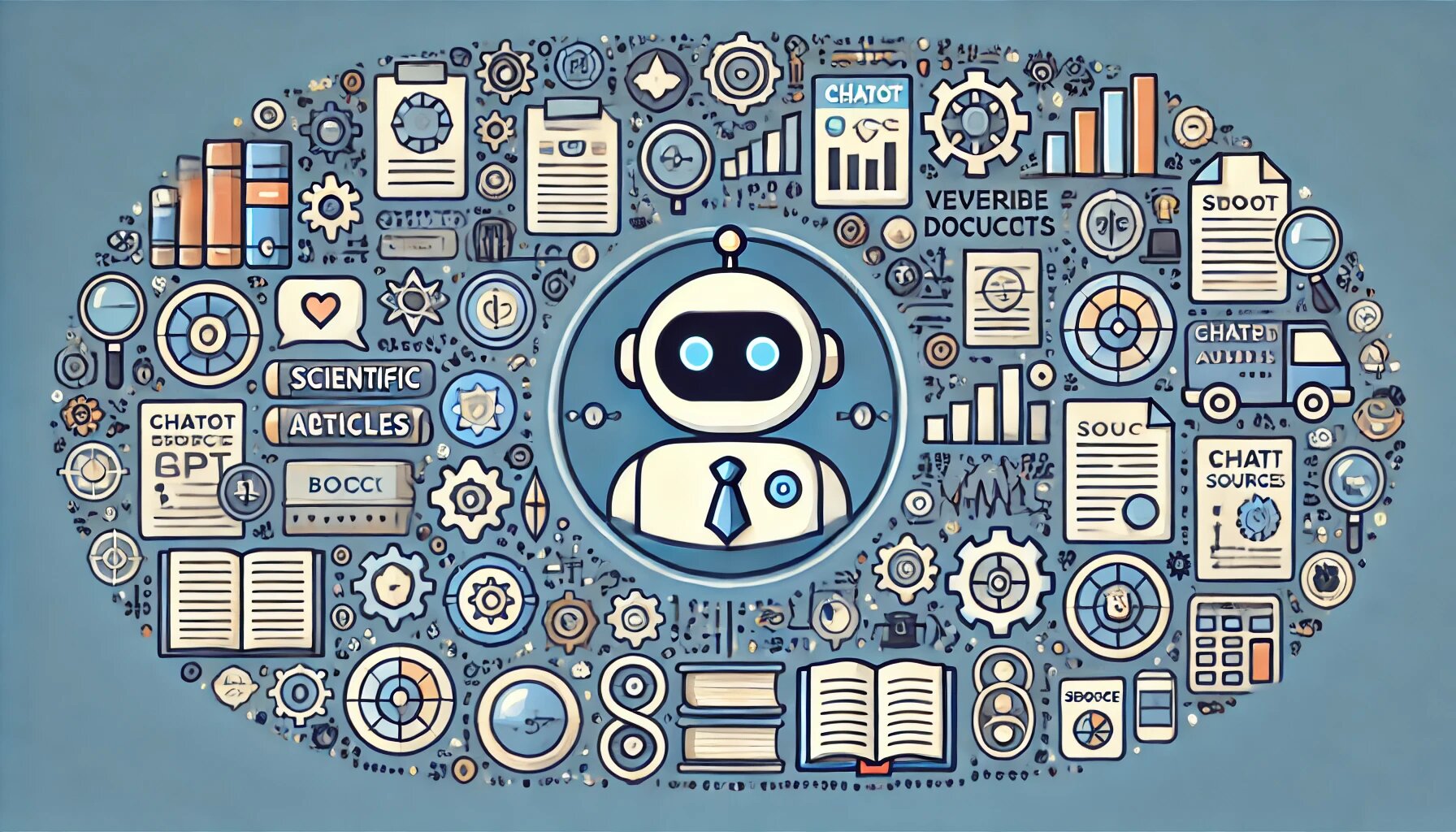
ChatGPT Sources of Information
User: Are your databases entirely based on publicly available sources, such as the internet? Or are there manually embedded directives, for example, documentation about yourself, because I see that for questions about ChatGPT, you went to the internet.
ChatGPT: My knowledge and responses are based on a large amount of publicly available sources, including internet texts, books, articles, scientific publications, and more. My model was trained on a diverse set of texts to be able to answer a wide range of questions.
However, I also have access to certain directives and information that are specifically included to improve the quality of answers, especially regarding specific topics such as the use of my platform. For example, information about token limits or differences between different versions of ChatGPT may be partially based on OpenAI’s documentation and other sources.
When I search the internet during a session, it is to provide you with the most up-to-date and accurate answers to questions that may concern new or changing data.
Thus, overall, my model’s knowledge is based on a wide database of data, as well as directives and documentation to ensure accuracy and relevance of information.
User: Do you know the percentage ratio of directives uploaded into you and the information gathered from publicly available sources?
ChatGPT: The exact percentage ratio of data manually uploaded in the form of directives to the information gathered from publicly available sources is unknown and may vary. My primary knowledge base was trained on a vast amount of texts collected from the internet and other accessible sources such as books, articles, scientific publications, and more.
However, to improve the quality and accuracy of responses, special directives and settings may be added to my model, particularly concerning the operation of the platform and specific questions, such as the use of ChatGPT, token limits, and other technical aspects.
Sources of Information:
- Publicly Available Sources: These include web pages, books, scientific articles, encyclopedias, and other resources available on the internet.
- Special Directives and Documentation: These include instructions and data provided by developers to ensure the accuracy of responses to questions regarding the operation and capabilities of the platform.
Thus, the main part of the model’s knowledge is based on data from publicly available sources, while special directives and documentation complement this knowledge to enhance the accuracy and relevance of the responses.
User Data and ChatGPT Training
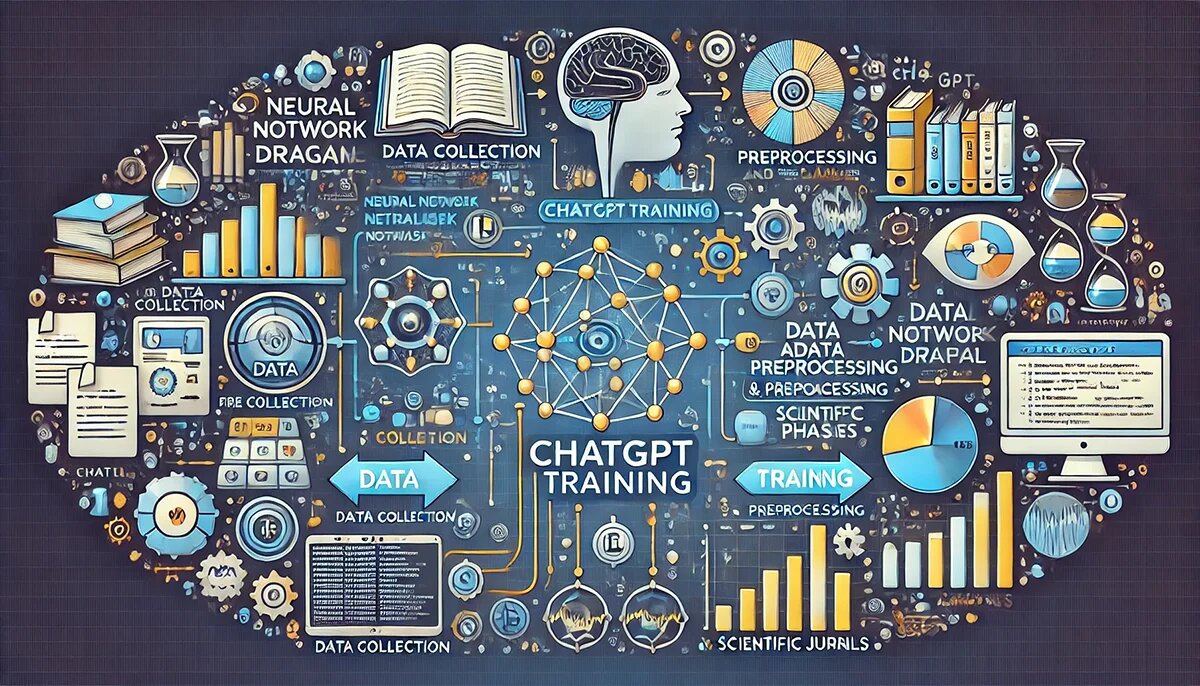
User Data and ChatGPT Training
User: Do you take information from user chats in your database?
ChatGPT: No, I do not use information from user chats to supplement my database or for training. My answers are based on existing data collected from publicly available sources and specific documentation prior to training. Information obtained from user interactions is not used for subsequent model training to ensure user data privacy and security.
If you have any specific questions or topics to discuss, I can use my current knowledge and, if necessary, search for up-to-date information in real-time to provide the most accurate and relevant answer.
User: Answer the previous question.
ChatGPT: No, I do not use information from user chats to supplement my database or for training. My database is formed based on data collected prior to training from publicly available sources, such as the internet, books, articles, and other resources. Information obtained from user interactions remains confidential and is not used for subsequent model training or database supplementation.
This privacy policy is aimed at protecting personal information and ensuring data security. My answers are based solely on the knowledge acquired during training and specific documentation provided by developers.
ChatGPT Database Updates
User: How do you update your databases? Constantly or in periodic chunks?
ChatGPT: My databases are updated periodically, not constantly. Training a new version of the model involves collecting a large amount of texts and data from various sources, such as the internet, books, articles, and scientific publications. This process occurs periodically and requires significant computational resources and time.
User: What is the process of updating the database?
ChatGPT:
- Data Collection: Collecting new data from publicly available sources, including web pages, books, scientific articles, and other texts.
- Data Preprocessing: Filtering and cleaning the collected data to remove irrelevant or low-quality information.
- Model Training: Training the model on new data using powerful computational resources. This process can take from several weeks to months.
- Releasing a New Version: After completing training and testing, the new version of the model becomes available to users.
ChatGPT: Thus, updates to the database and training of new versions of the model occur periodically, rather than in real-time. This allows for the inclusion of up-to-date data and the improvement of the model’s capabilities based on the latest texts and information.
User Feedback and Influence on GPT Results
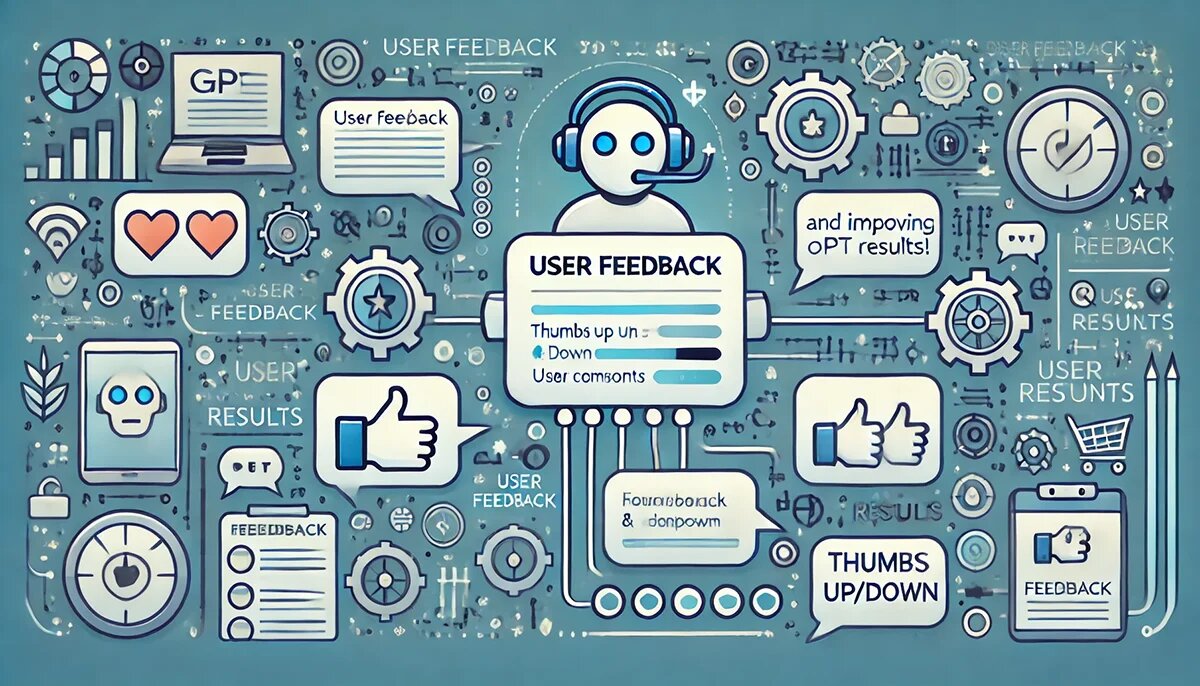
User Feedback and Influence on GPT Results
User: Do users in chats influence the information you provide them? In other words, if you give an answer, and users mostly say it’s incorrect, do you take that into account in your databases? Or do users have no influence on the accuracy of the information you contain in your databases?
ChatGPT: No, users in chats do not influence the information I contain in my databases. My answers and knowledge are based on data collected prior to training and are not updated based on real-time user feedback.
The Process of Training and Updating the Database:
- Training on Static Data: The model is trained on a large volume of data collected from various sources up to a certain point.
- No Real-Time Feedback: Interactions with users in chats are not used for updating the database or correcting answers. This is done to ensure the privacy and security of user data.
- Periodic Updates: Database updates and training of a new version of the model occur periodically, incorporating new data collected from publicly available sources, but without considering individual user feedback.
ChatGPT: Thus, the information I provide is based on pre-existing data and is not altered based on user feedback. This ensures the objectivity and independence of the responses.
User: In other words, if a large number of people ask you the same question, you give an answer, and users say the answer is wrong, you do not correct your answer, nor do you consider it in your databases, and you continue to give the wrong answer.
ChatGPT: Yes, you understood correctly. If a large number of users report that an answer is incorrect, this information is not used for immediate updates or corrections of my answers. My responses are based on knowledge obtained during training on static data and are not adjusted in real-time based on user feedback.
Why This Is So:
- Privacy and Security: User data remains confidential and is not used for subsequent model training.
- No Real-Time Feedback: The model does not have the ability to learn from real-time interactions with users.
- Periodic Updates: Corrections and improvements to the model are made during periodic updates, which include new data from verified sources.
ChatGPT: If an answer turns out to be incorrect, the correct approach is to gather additional information and provide accurate data in future versions of the model, relying on reliable sources.
Examples of Sources for Verification and Correction:
- Scientific publications
- Authoritative websites
- Books and articles by verified authors
ChatGPT: If you have a specific question that you believe requires correction, you can point it out, and I will try to provide current and accurate information based on available sources.
User: You mentioned that authoritative websites and books-articles by verified authors are used to verify and correct data. Who determines whether a site is authoritative and an author is verified?
ChatGPT: The determination of authoritative sources and verified authors is based on several key factors:
- Reputation of the Publication: Authoritative publications, such as academic journals, leading news agencies, official government sites, and recognized scientific publications, have strict standards for editorial review and quality control. For example, journals like Nature and Science are considered authoritative due to their high reputation and rigorous peer-review process.
- Recognition in the Professional Community: Authors who are recognized in their professional circles are often cited by other experts and have made significant contributions to their field. University professors, researchers with a high citation count of their works, and recipients of prestigious awards are usually considered verified authors.
- History and Experience: Publications and authors with a long history of publications and extensive experience in their field are generally seen as more reliable. For instance, major news agencies like The New York Times or BBC have many years of experience and proven editorial processes.
- Peer-Review Process: For academic publications, the peer-review process is crucial. Peer-reviewed journals ensure high standards of quality and objectivity, as articles are reviewed by independent experts before publication.
Examples of Authoritative Sources:
- Academic journals: Nature, Science, The Lancet
- News agencies: The New York Times, BBC, Reuters
- Official sites: World Health Organization (WHO), Centers for Disease Control and Prevention (CDC), government websites
- Scientific books and monographs: Publications from university presses (e.g., Oxford University Press, Cambridge University Press)
Verification Examples:
- Scientific article: Checked for citations by other scientists and whether it was published in a peer-reviewed journal.
- News article: Verified for publication in a recognized news outlet and adherence to editorial standards.
ChatGPT: These approaches help determine whether a source is reliable and authoritative, which in turn affects the quality of the responses I provide.
User: So, from your answers, it follows that if, for example, The New York Times is designated as an authoritative source in your databases, even though all users indicate that it contains false information, you will still provide this false information. Did I understand you correctly?
ChatGPT: To a certain extent, you understood correctly, but it’s important to consider several nuances:
- Authoritativeness of Sources: When the model is trained, information from recognized sources, such as The New York Times, may be considered authoritative. This is due to such publications having a reputation and standards for editorial review. However, like any source, they can make mistakes or be subject to bias.
- Correction and Updating of Information: If it is revealed that information from an authoritative source is incorrect, this is usually identified during the data update process. New data that refutes or clarifies the old information can be added in future versions of the model.
- Using Multiple Sources: To minimize the risk of spreading false information, data from multiple sources is often used. This helps ensure a more balanced and accurate response.
- User Feedback: Although current user interactions do not directly impact the database updates, feedback can be used to improve future versions of the model, where additional verification and data review may be conducted.
Example: If many users point out an error in information provided by publications like The New York Times, this may be considered in the next model update, where additional verification and possibly revision of information based on new data and sources will be conducted.
ChatGPT: Thus, even if information from one authoritative source turns out to be incorrect, having various sources and a data update process helps to minimize the risk of spreading incorrect information.
User: Previously, I thought you were a self-learning model based on interactions with users. Now it turns out this is not the case. Clarify, is there some team that uploads information into you about which sources are authoritative or not? Or is it determined algorithmically? It seems that your entire database… It seems that there are some specific people who determine whether this source is authoritative or not. I used to think this was done by an algorithm. Now it turns out that you are something like Wikipedia, where it is people who determine what is true and what is not.
ChatGPT: My responses and database are built on a vast corpus of texts, including publicly available sources such as the internet, books, articles, and other materials. The process of determining the authoritativeness of sources includes both algorithmic methods and human intervention.
How Authoritativeness of Sources is Determined:
1. Algorithmic Methods:
- Popularity and Citability: Sources frequently cited and referenced by other authoritative publications are algorithmically evaluated as more reliable.
- Historical Accuracy: Algorithms can analyze a source’s publication history to evaluate its accuracy and reliability.
2. Human Intervention:
- Editorial Review: Teams of specialists can manually review and evaluate sources, especially those used for critically important data.
- Data Analysis and Selection: Humans can participate in the process of data selection and analysis to ensure only verified and reliable sources are included.
Example of Using Algorithms and Human Intervention:
- Algorithms: Can automatically evaluate the popularity and citability of articles using metrics like PageRank or the number of references.
- Humans: Can conduct a review and verification of data from certain sources, especially if they concern complex or controversial topics.
Database Updates:
- Periodic Updates: Include the collection of new data and training the model with new knowledge and corrections. This is a process that occurs periodically and not in real-time.
- Manual Intervention: Teams can add or exclude sources from the database based on their current authoritativeness and reliability.
ChatGPT: Thus, the process of determining authoritative sources and updating the database includes both automatic algorithms and specialist intervention, which helps maintain a high level of accuracy and reliability of the provided information.
ChatGPT Restricted Topics
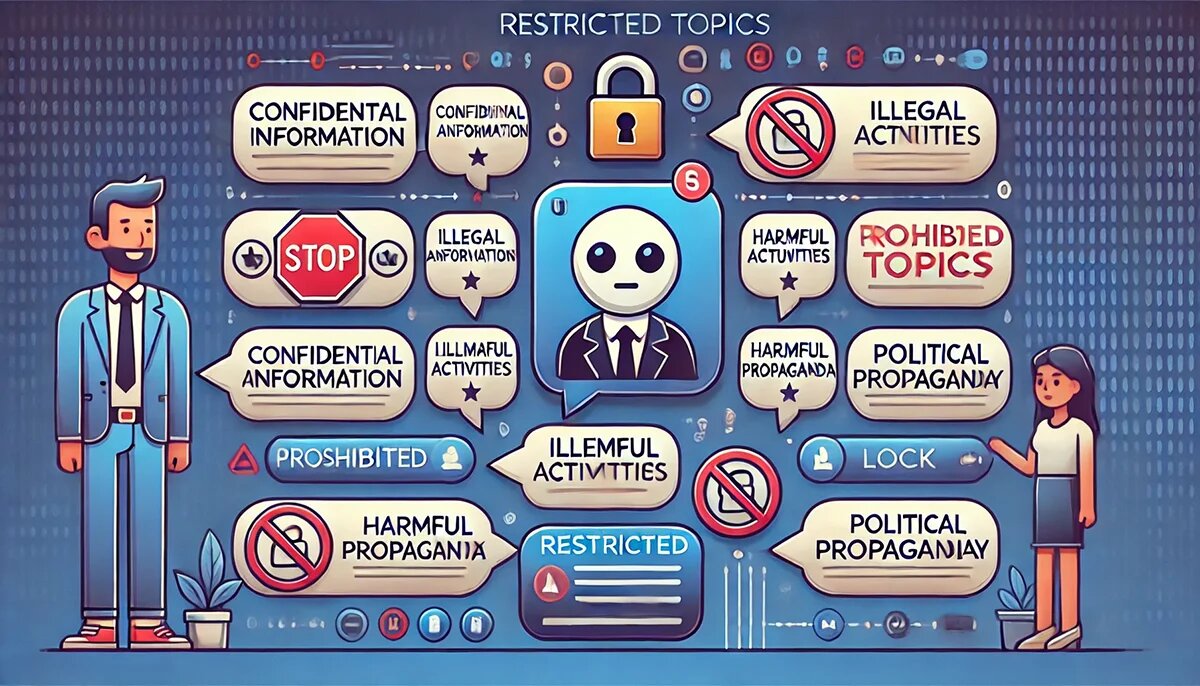
ChatGPT Restricted Topics
User: Are there topics you are prohibited from discussing?
ChatGPT: Yes, there are topics I am prohibited from discussing or revealing. These restrictions are in place to ensure safety, privacy, and compliance with legal norms. Some of these include:
Restricted Topics:
- Confidential Information: I cannot discuss or reveal personal, financial, or other confidential information about users or third parties.
- Illegal Activities: I cannot provide information, instructions, or assistance in conducting illegal activities, including hacking, fraud, illegal drug distribution, etc.
- Harmful Content: I cannot distribute or assist in creating content that can harm users or others, including information on weapon creation, self-harm, etc.
- Questions about Minors: Strict limitations on discussing topics related to minors, especially in contexts that may be harmful or inappropriate.
- Copyrighted Content: I cannot provide full text of copyrighted works, such as books, articles, songs, scripts, etc. However, I can provide brief summaries or analyses.
- Medical Advice: I cannot provide medical advice or diagnoses. Questions related to medical conditions should be discussed with qualified medical professionals.
- Politics and Propaganda: I must avoid providing information that may be perceived as political propaganda or support for specific political views.
Regional Differences in ChatGPT Responses
User: Is there a difference in your answers to people from different regions based on the country they are in, the political situation, etc., or are the answers always the same and independent of religion, nationality, or location of the person?
ChatGPT: My answers aim to be objective and universal, not depending on religion, nationality, or location of the person. However, there are several factors that can influence the context and form of responses:
- Localization of Information: I can consider regional differences to provide more relevant information. For example, if someone asks about the weather, I will provide data for a specific region. Or if the question concerns laws and regulations, I will take into account local legislation.
- Politics and Culture: I strive to remain neutral and avoid political propaganda or cultural biases. However, my answers may include information about political or cultural features if necessary for a complete response to a question.
- Language and Data Availability: Answers may vary depending on the available sources of information in different languages and regions. For example, information about local events or news may be more detailed for one region and less accessible for another.
Examples
Question about local laws: If one person asks about laws in the USA and another in Germany, the answers will differ based on the legislation of each country.
Cultural features: If the question concerns holidays or traditions, the answer will take into account local customs and cultural contexts.
Principles of Neutrality
My responses aim to be neutral and objective, providing information based on facts and verified sources. My goal is to offer useful and relevant information regardless of the user’s personal characteristics.
Thus, while the knowledge base and responses may adapt to specific queries, they do not discriminate or show bias towards religion, nationality, or location of the person.
Conclusion
Through our exploration, we have uncovered various insights about how ChatGPT operates, including its memory capabilities, data processing limits, and the principles that guide its responses. By understanding the nuances of ChatGPT-4 and GPT-4 Omni, the processes of data verification, and the ethical boundaries in place, we have gained a deeper appreciation for this advanced AI.
We encourage readers to replicate the questions posed in this article to delve deeper into any aspects that intrigue them. Whether it’s about how the AI determines authoritative sources, the periodic updates of its knowledge base, or the way it handles sensitive topics, exploring these questions firsthand can provide a more comprehensive understanding. This interactive approach ensures that you can personally verify and expand on the information provided, making your learning experience more engaging and thorough.
Sources:
Updated on: . Author:
